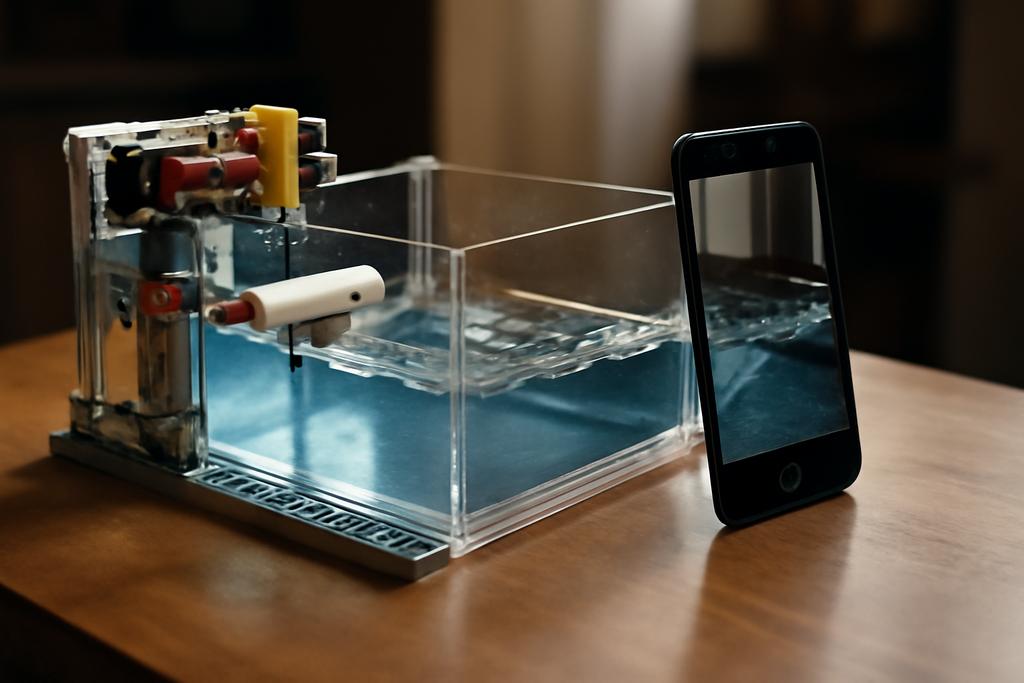Forget expensive labs and complicated simulations. Researchers at University College Dublin, led by Lennon Ó Náraigh, Nicolas Farault, and Nicola Young, have shown that you can unlock the mysteries of water waves using surprisingly simple tools: a tabletop flume built from Lego, a smartphone, and some clever software.
The Unexpected Elegance of Simplicity
The study, a delightful blend of theory, experiment, and computation, challenges the conventional wisdom that understanding water waves requires enormous, costly equipment. The researchers’ innovative approach builds a tabletop wave tank – a “flume” – from readily available materials, using Lego to construct a wave generator. This miniature marvel generates waves, whose behavior is then meticulously captured on video using a standard mobile phone camera. The resulting footage, remarkably, serves as the raw data for a detailed analysis of water wave behavior.
This simplicity, however, doesn’t imply a lack of sophistication. The core of the project lies in combining experimental data with both theoretical predictions from linear gravity-capillary wave theory and high-fidelity numerical simulations using OpenFOAM, a powerful open-source computational fluid dynamics (CFD) software. This multi-pronged approach provides a robust test of the theoretical understanding and a beautiful demonstration of how different approaches converge on a shared understanding.
Unraveling the Wave Equation: Linearity and Beyond
Water waves, at their heart, are governed by complex equations of motion. However, under certain conditions—when the wave amplitude is small compared to the water depth—these equations simplify dramatically, becoming linear. Linearity implies that you can treat the waves as a straightforward superposition of individual wave components. This dramatically simplifies the analysis. But is this simplification valid in real-world settings?
The UCD researchers set about answering this question by comparing the waves produced in their Lego flume to the predictions of the linearized equations. The agreement between the experimental measurements, the theoretical model, and the OpenFOAM simulations is striking. However, their analysis reveals a fascinating twist: the waves aren’t purely linear. A careful statistical analysis of the experimental data reveals a combination of travelling waves (those that propagate in one direction) and standing waves (those that oscillate in place). This richer picture, beyond the simplicity of pure linearity, speaks to the complexity lurking beneath the surface of even seemingly basic physical phenomena.
From Lego to OpenFOAM: The Power of Open Source
The researchers’ use of OpenFOAM is particularly noteworthy. OpenFOAM is an extremely powerful, yet open-source, CFD software package. Its availability means that anyone with the necessary skills can perform complex fluid simulations, democratizing access to a previously exclusive tool. This accessibility is mirrored in the construction of the experimental setup itself, underscoring a philosophy of making scientific inquiry more accessible and inclusive.
The study’s integration of OpenFOAM with the Lego flume and simple video analysis is a masterclass in leveraging the strengths of different approaches. The low-cost experimental setup provides valuable and verifiable experimental data. Meanwhile, OpenFOAM allows for controlled simulations, enabling a deeper dive into the complexities that cannot be fully captured in a simple experiment. The theoretical model itself acts as an essential bridge between these two.
Lessons Learned: Bridging the Gap Between Theory and Practice
The researchers also incorporated a crucial element often missing from research: feedback from the students who used the flume and OpenFOAM for their own investigations. The student surveys highlight the potential and the challenges of this integrated approach. While the students uniformly found the combination of theory, experiment, and simulation to be incredibly enriching, they also emphasized the steep learning curve involved in learning CFD software. This is a valuable lesson for educators who want to incorporate such hands-on projects into their curriculum, underscoring the need for adequate instruction and support.
The study’s careful integration of experimental and computational approaches is a model for future research. It also highlights the potential for creative, low-cost approaches to scientific investigation, breaking down barriers and fostering a more inclusive and accessible scientific community. It’s a powerful reminder that groundbreaking science doesn’t always require expensive labs and cutting-edge technology; sometimes, the most powerful tools are imagination and a well-placed Lego brick.










